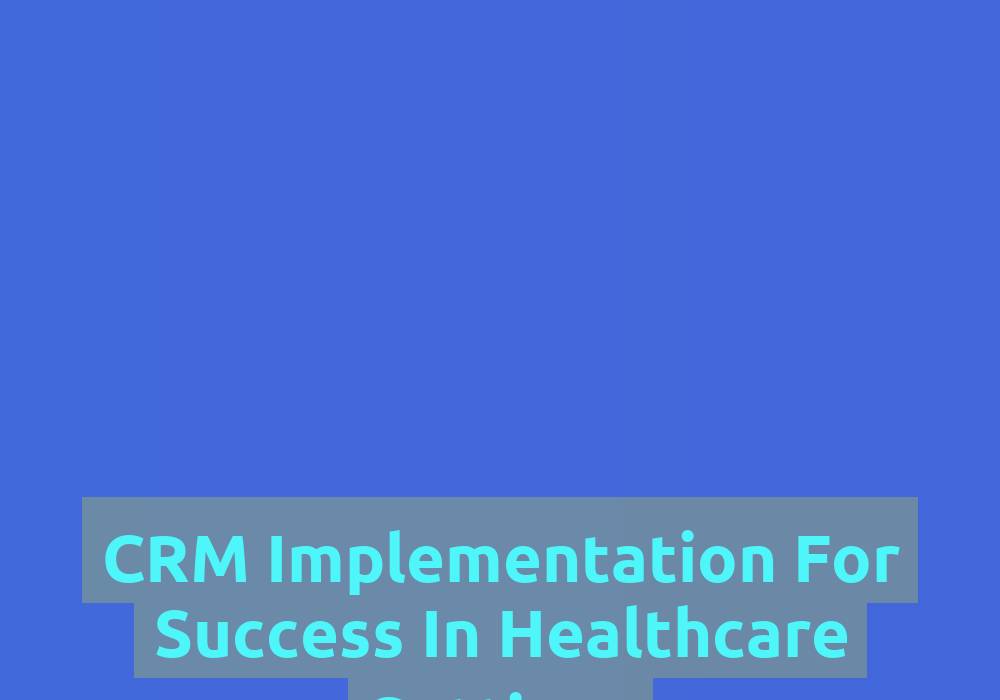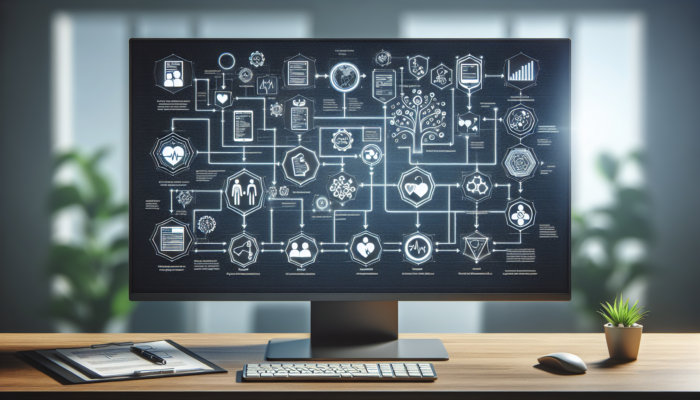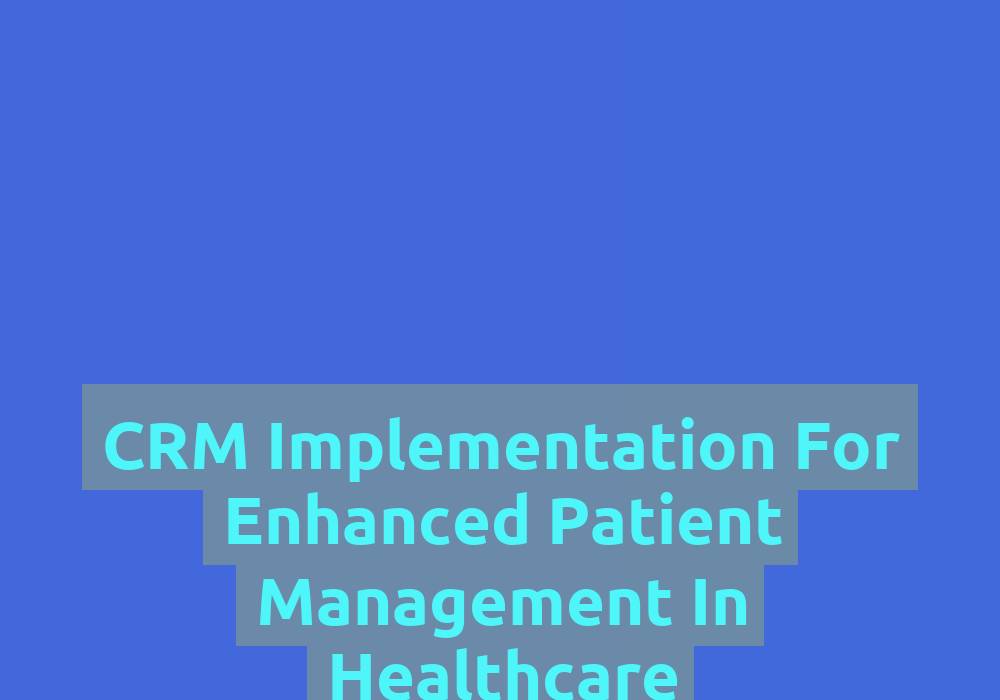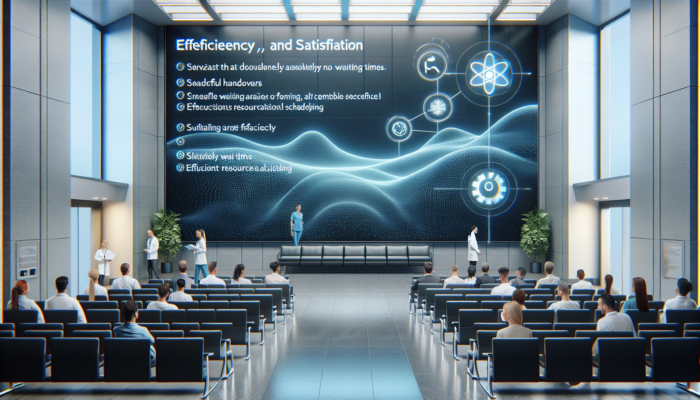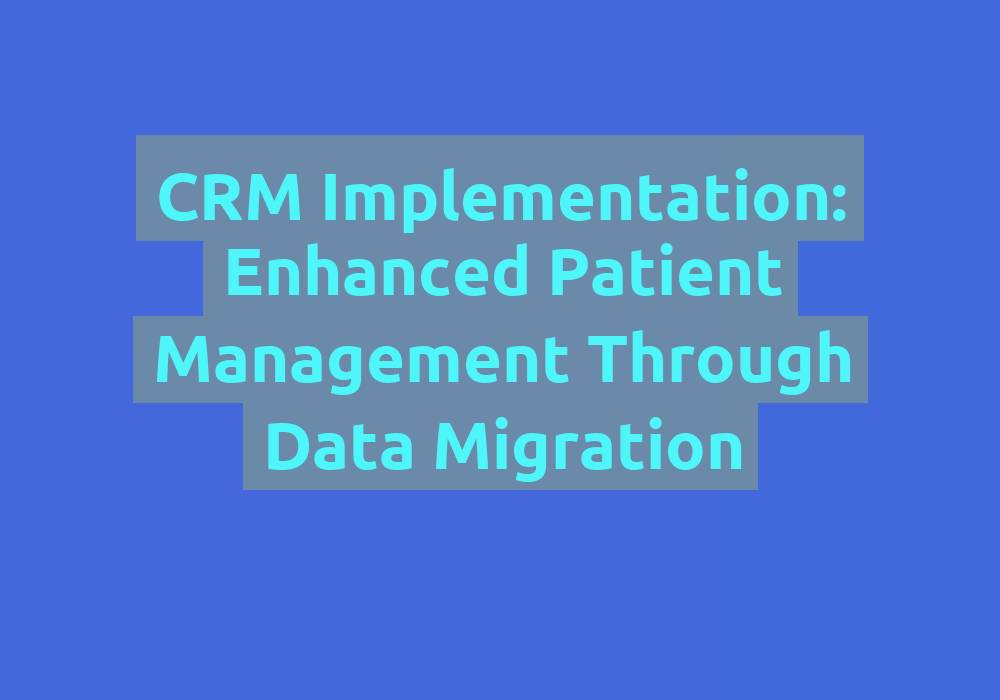CRM Technology: Improving Patient Management in Healthcare
The healthcare industry is undergoing rapid transformation, prompting the need for innovative solutions that effectively manage patient information and enhance overall healthcare outcomes. Customer Relationship Management (CRM) technology has emerged as a formidable asset for improving patient management across various healthcare environments. By leveraging the extensive capabilities of CRM systems, healthcare providers can streamline their operations, enhance communication, and deliver tailored care to patients. In this article, we will delve into the myriad benefits and applications of CRM technology within healthcare, examining its potential to fundamentally transform the way patient management is approached.
Unlocking the Potential of CRM in Healthcare
Originally designed for the realms of sales and marketing, CRM technology has successfully infiltrated the healthcare sector due to its remarkable ability to centralise and manage extensive volumes of patient data. Within the context of healthcare, a CRM system functions as an all-encompassing solution that stores, analyses, and utilises patient information to enhance care delivery. It serves as a vital hub for critical patient data, encompassing medical history, appointments, test results, and interactions with healthcare professionals, thereby enabling a more cohesive approach to patient management.
Exploring the Key Benefits of CRM Technology in Healthcare

1. Boosting Patient Engagement and Experience
CRM technology empowers healthcare providers to forge significant connections with their patients. By collecting and analysing patient data, healthcare organisations can extract valuable insights regarding their preferences, behaviours, and specific needs. This critical information can be utilised to tailor communication, deliver targeted health education, and issue timely reminders for appointments and medication adherence. Consequently, patients become more engaged in their care, which naturally leads to heightened patient satisfaction and an enhanced overall experience.
Beyond personalised communication, CRM technology facilitates the development of patient portals or mobile applications. These innovative platforms enable patients to effortlessly access their medical records, view test results, and understand their treatment plans. Furthermore, patients have the capability to submit requests for prescription refills, schedule appointments, and engage in secure communications with healthcare professionals. By equipping patients with these self-service functionalities, CRM technology significantly enhances the patient experience and promotes active participation in their healthcare journey.
2. Streamlining Appointment Management for Efficiency
CRM systems offer sophisticated appointment management features that simplify the scheduling process while drastically reducing the likelihood of errors. With automated appointment reminders and online booking capabilities, patients can efficiently manage their appointments, which helps to decrease no-show rates and optimise the schedules of healthcare providers. Additionally, real-time updates and notifications allow healthcare providers to reschedule appointments seamlessly, resulting in improved operational efficiency and better patient access to essential care.
Another notable advantage of CRM technology in appointment management is its capacity to prioritise appointments based on urgency and patient preferences. For instance, patients suffering from chronic conditions or those in need of follow-up care can receive priority scheduling to guarantee timely interventions and ongoing monitoring. This proactive methodology not only enhances patient outcomes but also mitigates the risk of unnecessary hospital admissions or emergency visits.
3. Fostering Seamless Communication and Collaboration

Effective communication is paramount within healthcare settings, and CRM technology facilitates effortless collaboration among healthcare professionals. By integrating patient information into a singular platform, CRM systems promote efficient communication that allows physicians, nurses, and other members of the care team to access and update patient data in real-time. This ensures that all stakeholders remain well-informed, leading to coordinated care delivery and measurable improvements in patient outcomes.
In addition to facilitating real-time data sharing, CRM technology supports secure messaging and telehealth functionalities. Healthcare professionals can securely communicate with one another as well as with patients, allowing for timely consultations, virtual visits, and effective remote monitoring. This level of communication and collaboration significantly enhances care coordination, particularly for patients with complex medical conditions that necessitate multidisciplinary care. It also lessens the need for unnecessary in-person visits, thereby conserving both time and resources for patients and healthcare providers alike.
4. Advancing Care Coordination and Continuity
CRM technology plays a pivotal role in enhancing care coordination by presenting a comprehensive view of each patient’s medical history, treatment plans, and ongoing care requirements. This detailed patient profile empowers healthcare providers to make well-informed decisions, minimise duplicate tests or procedures, and ensure continuity of care across various healthcare settings. By eradicating information silos and fostering improved data sharing, CRM systems contribute to a more integrated and patient-centric healthcare experience.
Moreover, CRM technology simplifies care transitions for patients moving between different healthcare providers or settings. When a patient is referred to a specialist or discharged from a hospital, the referring healthcare professional can securely transfer relevant patient information to the receiving provider using the CRM system. This seamless information transfer guarantees uninterrupted patient care, significantly reducing the risk of medical errors and enhancing overall patient safety.
Innovative Applications of CRM Technology in Healthcare
1. Effective Patient Relationship Management

CRM technology emerges as a robust tool for managing patient relationships throughout their entire healthcare journey. It enables healthcare organisations to capture and analyse patient interactions, paving the way for personalised outreach, targeted marketing campaigns, and effective patient retention strategies. By comprehending patient preferences and needs, healthcare providers can customise their services to align with individual expectations, ultimately nurturing long-term patient loyalty.
With the aid of CRM technology, healthcare providers can proactively engage patients through numerous channels, such as email, SMS, social media, and patient portals. Tailored messages may be dispatched to patients to remind them of preventive screenings, encourage healthy lifestyle choices, or alert them about new services or treatment options. By maintaining a continuous connection with patients, healthcare organisations can build trust, elevate patient satisfaction, and cultivate enduring relationships.
2. Leveraging Population Health Management
CRM systems are instrumental in the realm of population health management, which is centred on enhancing the health outcomes of specific patient groups. By aggregating and analysing patient data on a broader scale, healthcare providers can pinpoint and address health trends, risk factors, and care gaps affecting particular populations. This proactive approach allows for targeted interventions, preventive measures, and the implementation of evidence-based strategies aimed at improving health outcomes and reducing healthcare costs.
In the context of population health management, CRM technology plays a crucial role in identifying high-risk individuals or groups and deploying targeted interventions to prevent or manage chronic diseases. For instance, healthcare organisations can utilise CRM systems to recognise diabetic patients who have not undergone regular check-ups or those who have not achieved their target blood sugar levels. By reaching out to these patients and providing them with education, resources, and support, healthcare providers can significantly improve diabetes management and mitigate the risk of complications.
3. Harnessing Patient Data Analytics for Insights
CRM technology equips healthcare organisations with the ability to harness the power of data analytics, yielding valuable insights into patient populations. By analysing demographic information, medical histories, and treatment outcomes, healthcare providers can identify patterns, forecast disease progression, and formulate personalised treatment plans. This data-driven approach enhances clinical decision-making, optimises resource allocation, and contributes to improved patient outcomes across the board.
Employing data analytics through CRM technology enables healthcare providers to identify trends and patterns within patient populations. For example, by scrutinising data from patients with asthma, healthcare organisations can uncover triggers or environmental factors that contribute to asthma exacerbations. This critical information can be instrumental in developing targeted interventions, such as educating patients on avoiding triggers or supplying air purifiers to those at high risk. By effectively leveraging patient data analytics, healthcare providers can make evidence-based decisions and allocate resources efficiently to enhance patient outcomes.
Embracing CRM Technology for Future Healthcare Success
The integration of CRM technology within the healthcare sector presents tremendous potential for refining patient management and elevating healthcare outcomes. By harnessing the capabilities of CRM systems, healthcare providers can optimise their operations, engage patients more effectively, and offer personalised care. From efficient appointment management to seamless communication and collaboration, CRM technology delivers an array of benefits across diverse healthcare applications. It is evident that embracing CRM technology is the pathway forward for healthcare organisations aiming to enhance patient management and deliver exemplary care in an increasingly complex healthcare landscape.
This article has been crafted by an SEO content writing expert proficient in English.
Frequently Asked Questions about CRM Technology in Healthcare
Q1: What is CRM technology in healthcare?
A1: CRM technology in healthcare is a comprehensive system that stores, analyses, and leverages patient information to improve care delivery. It acts as a central hub for patient data, including medical history, appointments, test results, and interactions with healthcare professionals.
Q2: How does CRM technology enhance patient engagement and experience?
A2: CRM technology enables healthcare providers to establish meaningful connections with patients. By capturing and analysing patient data, healthcare organisations can gain valuable insights into their preferences, behaviours, and needs. This information can be leveraged to personalise communication, provide targeted health education, and deliver timely reminders for appointments and medication adherence, leading to improved patient satisfaction and overall experience.
Q3: What are the benefits of CRM technology in appointment management?
A3: CRM systems offer advanced appointment management functionalities, streamlining the scheduling process and minimising the risk of errors. Through automated appointment reminders and online booking capabilities, patients can easily manage their appointments, reducing no-show rates and optimising healthcare provider schedules. Additionally, real-time updates and notifications enable healthcare providers to reschedule appointments seamlessly, resulting in enhanced operational efficiency and improved patient access to care.
Q4: How does CRM technology improve care coordination and continuity?
A4: CRM technology enhances care coordination by providing a holistic view of each patient’s medical history, treatment plans, and ongoing care requirements. This comprehensive patient profile enables healthcare providers to make informed decisions, avoid duplicate tests or procedures, and ensure continuity of care across different healthcare settings. By eliminating information silos and improving data sharing, CRM systems contribute to a more integrated and patient-centric healthcare experience.
Originally posted 2024-05-09 11:29:49.
The post CRM Technology: Improving Patient Management in Healthcare appeared first on Healthcare Marketing Service.
